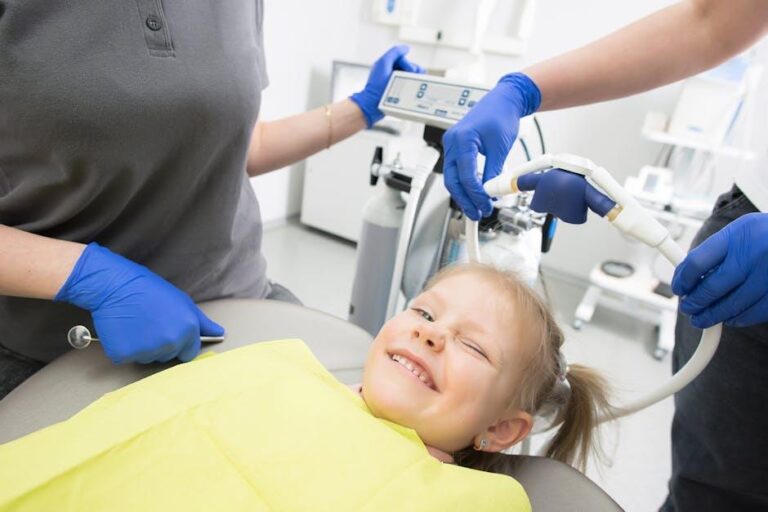1 in 3 Kids Has Dental Problems, Poll Finds – U.S. News & World Report
Recent research highlights a concerning trend in pediatric oral health across the United States. According to a poll published by U.S. News & World Report, 1 in 3 children are currently facing dental problems. This article explores the key findings, causes, and actionable steps parents and caregivers can take to safeguard their children’s smiles.
Understanding the Scope: The Poll Findings
The latest poll on children’s dental health reveals a stark reality: approximately 33% of kids in the U.S. suffer from dental issues ranging from cavities and tooth decay to gum disease and enamel erosion. This statistic is alarming given that dental diseases, especially in childhood, greatly impact overall health, nutrition, speech development, and self-confidence.
Key Statistics from the Poll
| Dental Problem | Prevalence Among Kids |
|---|---|
| Tooth Decay/Cavities | 28% |
| Gum Problems (Gingivitis) | 12% |
| Other Oral Issues | 7% |
| No Dental Problems Reported | 67% |
Why Are Children Prone to Dental Issues?
Dental problems in children often stem from a combination of lifestyle, dietary habits, hygiene practices, and access to dental care. Some common causes include:
- Poor Oral Hygiene: Inadequate brushing and flossing allow plaque build-up which leads to cavities.
- Diet High in Sugar: Frequent consumption of sugary snacks and drinks feeds harmful bacteria in the mouth.
- Lack of Regular Dental Checkups: Missing routine dental visits delays early detection and treatment.
- Insufficient Fluoride Exposure: Fluoride strengthens enamel, and lack of it can weaken teeth.
- Socioeconomic Barriers: Limited access to dental services and education can exacerbate issues.
The Impact of Poor Dental Health on Children
Untreated dental problems can cause significant physical and emotional challenges for children:
- Pain and Discomfort: Toothaches can disrupt sleep, focus, and daily activities.
- Speech and Developmental Issues: Severe dental decay can affect speech formation.
- Social and Psychological Effects: Poor dental appearance may lead to low self-esteem and bullying.
- Difficulty Eating and Nutrition: Pain can interfere with chewing, leading to poor nutrition.
- Overall Health Problems: Oral infections can contribute to systemic illnesses.
Practical Tips for Preventing Dental Problems in Kids
Parents and caregivers can take proactive steps to shield their children from dental diseases. Here are some effective strategies:
- Begin Oral Care Early: Clean your child’s gums after feeding and introduce brushing as soon as the first tooth erupts.
- Establish Good Brushing Habits: Help kids brush twice daily for two minutes using fluoride toothpaste.
- Limit Sugary Snacks and Drinks: Choose tooth-friendly snacks like fruits, cheese, and nuts.
- Regular Dental Visits: Schedule dental checkups every six months or as recommended by the dentist.
- Use Fluoride Toothpaste and Mouthwash: Consult your dentist about age-appropriate fluoride use.
- Educate on Oral Health: Make oral hygiene fun and informative to encourage lifelong habits.
The Role of Schools and Communities
Community involvement is crucial in addressing pediatric dental health. Many schools and local organizations support programs such as:
- School-based dental screenings and fluoride varnish applications
- Oral health education integrated into the curriculum
- Mobile dental clinics serving underprivileged areas
- Free or reduced-cost dental care programs for eligible families
Case Study: Improving Dental Health in a Local Community
One successful example comes from the “Bright Smiles Initiative” in a midwestern U.S. city where dental issues among children dropped by 15% after launching:
- Free dental workshops for parents and children
- Community fluoride rinse programs
- Collaboration with local dentists to offer low-cost preventative care
The initiative proved the positive impact of coordinated community efforts on pediatric oral health.
Common Treatments for Kids with Dental Problems
Depending on the severity and type of dental issue, treatments may include:
- Dental Fillings: To repair cavities and prevent further decay.
- Sealants: Protective coatings applied to back teeth to prevent cavities.
- Professional Cleanings: Removes plaque and tartar buildup.
- Fluoride Treatments: Strengthens enamel.
- Orthodontic Interventions: For bite or alignment issues related to early dental problems.
First-Hand Experience: Parents Share Their Stories
Jessica, a mother of two, shares her experience: “When my oldest daughter had multiple cavities by age six, we realized how important early dental care was. Since then, we changed her diet and routines. Our dentist also helped us understand which foods to avoid. Now, she loves brushing and visits the dentist without fear.”
Conclusion: Securing Healthy Smiles for the Next Generation
The poll’s finding that 1 in 3 kids has dental problems is a wake-up call for families, schools, and communities alike. Pediatric dental health is foundational to overall wellbeing and should be prioritized with consistent care, education, and access to dental services. By embracing preventive measures and fostering healthy habits from an early age, parents can significantly reduce risks and help their children enjoy a lifetime of healthy smiles.
Remember, early intervention and regular dental care are the cornerstones of preventing childhood dental diseases. Stay informed, stay proactive, and ensure your child’s bright smile is well protected!


